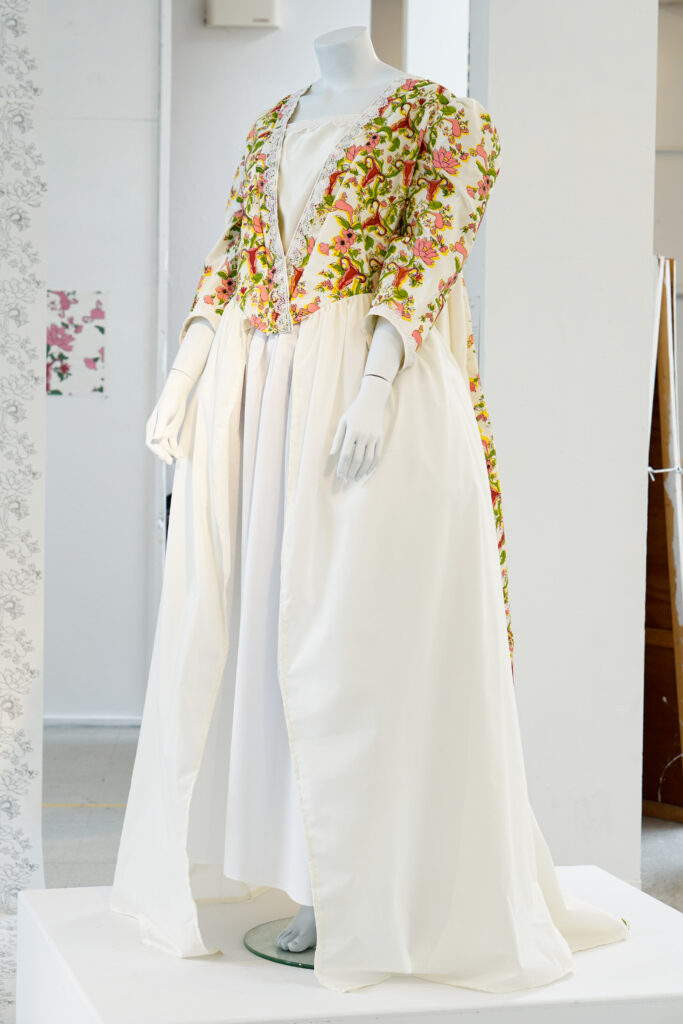
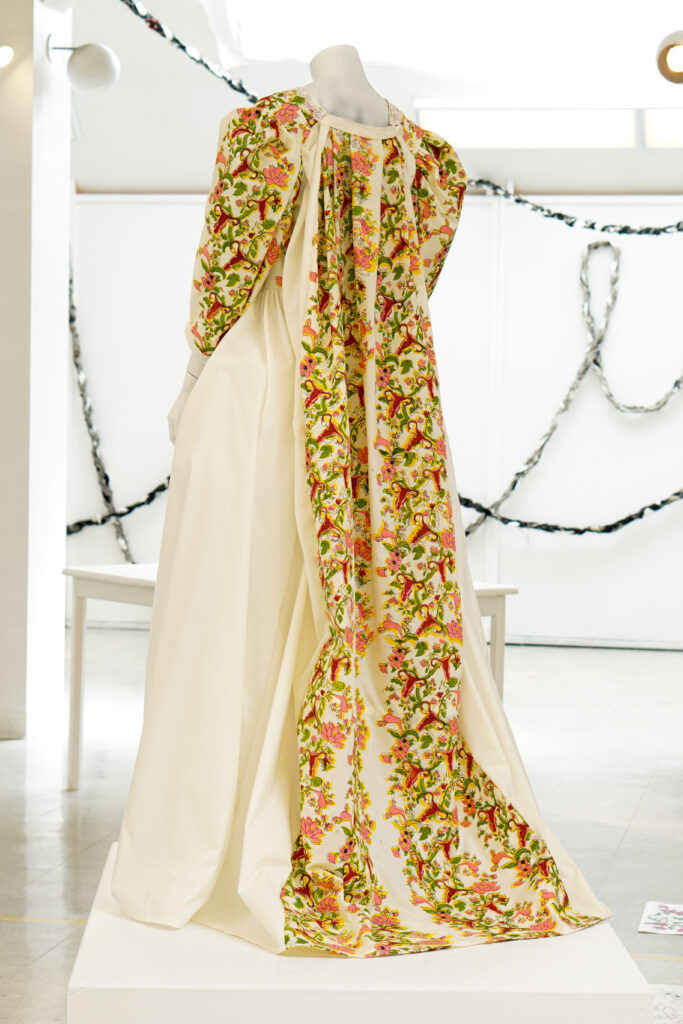
Health is an aspect of life that I explore frequently, but this project differs as the connotations associated with women’s reproductive health was the driving force behind my inspiration. I have previously focused on my own internal health issues, but have decidedly chosen to make a sculpture that specifically speaks to all people with a uterus. Uterine Chintz is a combination of silk screen, textiles, and found objects. I designed the pattern and screenprinted each layer by hand onto 15 yards of fabric, which was then sewn together and displayed on a mannequin. I also created the pannier pockets underneath the petticoat to create a more historic shape.
With this project, I wanted to focus on my own experiences with pelvic pain, but more importantly focus on other reproductive health conditions that are also relatively unexplored. Polycystic Ovarian Syndrome (PCOS), endometriosis and fibroids are leading concerns in women’s reproductive health. This leads us to question what exactly are these diseases, and how widely do they affect the population? Who is at risk? Will someone else I know contract or develop these diseases? Will I be subject to these issues? Would any other person with a uterus that I know have to suffer? The amount of questions that fueled this project were many, and helped lead me to the inspiration behind my artwork.
Endometriosis is the spreading of the inside uterine tissue (endometrium) that is usually shed once a month through menstruation on the outside of the reproductive system; it can grow on the uterus, fallopian tubes, ovaries, and so on. It is usually characterized by heavy chronic pelvic pain, and through heavy bleeding during menstruation. Diagnosing endometriosis can only be done through surgery, as there is no definitive way to test for the presence of the disease through blood testing, or through any other external tests such as x-ray/ultrasound scans. Treatments consist of anti-inflammatories, hormonal birth control and surgery.
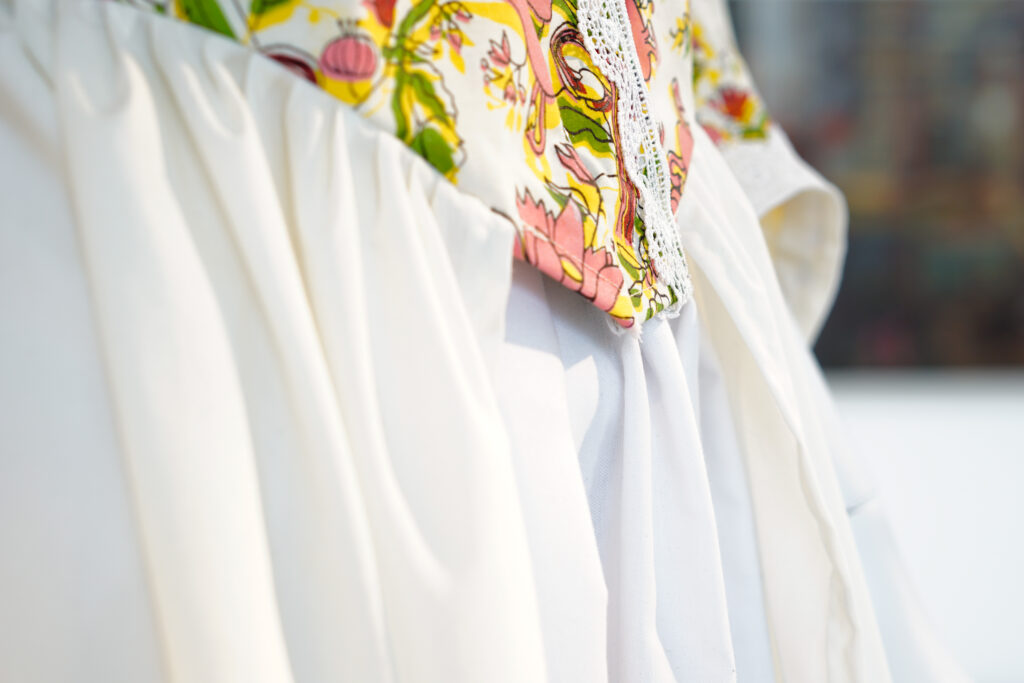

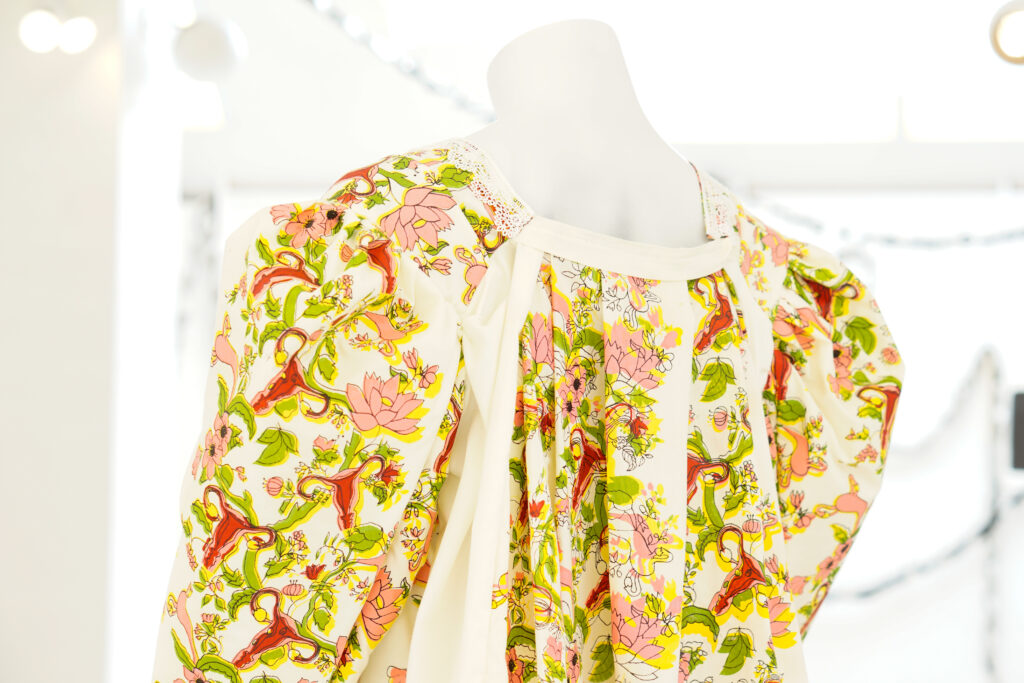
Fibroids, or uterine fibrosis, are benign tumours that grow within the walls of the uterus. Symptoms of fibroids vary, as some women feel pelvic pain and heavy menstruation, while others have no symptoms at all. The only method to remove the fibroids altogether is surgery – either a myomectomy (removing just the fibroid tissue), or a hysterectomy (removing the whole uterus altogether). Other treatments consist of pain medications like ibuprofen, and hormonal contraceptives like the birth control pill to soothe symptoms.
PCOS is the development of cysts within the ovaries, and is directly caused by the imbalance of reproductive hormones. It can cause infertility in women, and is the leading cause for infertility in women currently. There are more symptoms for this issue, such as irregular menstruation, increase in hair growth, weight gain, and so on. Treatments include: hormonal contraceptives, anti-androgen medicines (reduces acne and hair growth, but can cause head hair loss), and metformin (treats type 2 diabetes). Endometriosis, fibroids, and PCOS are all conditions that are relatively unexplored through research, and are extremely common, with 1 in 10 women of reproductive age affected by PCOS, 11% of women will experience endometriosis, and by age 50, 70% of white women and 80% of black women will develop fibroids.
The common grounds between these issues are clear: first of all, there is no definitive reason why or how these reproductive diseases occur; only theories about their formation are currently available. Second, there is no definitive cure for any of them, only treatments to help soothe or take away the affected tissue (with the risk that the disease will return). Third, all three cases are highly prevalent, yet still remain highly unresearched in terms of causes, treatments, and even new testing to help diagnose these issues.

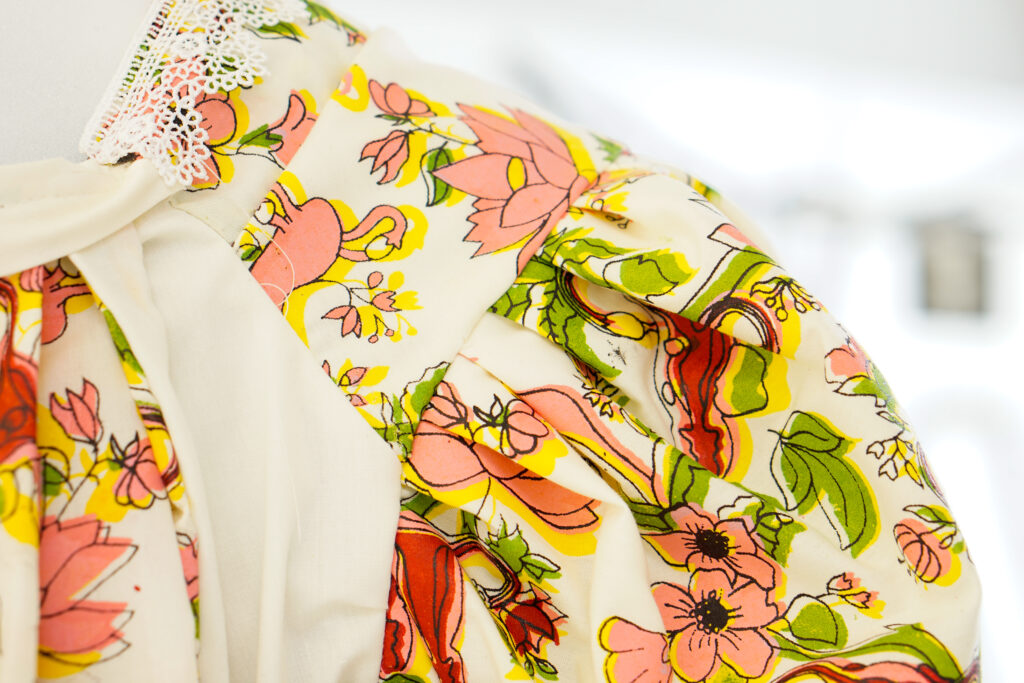
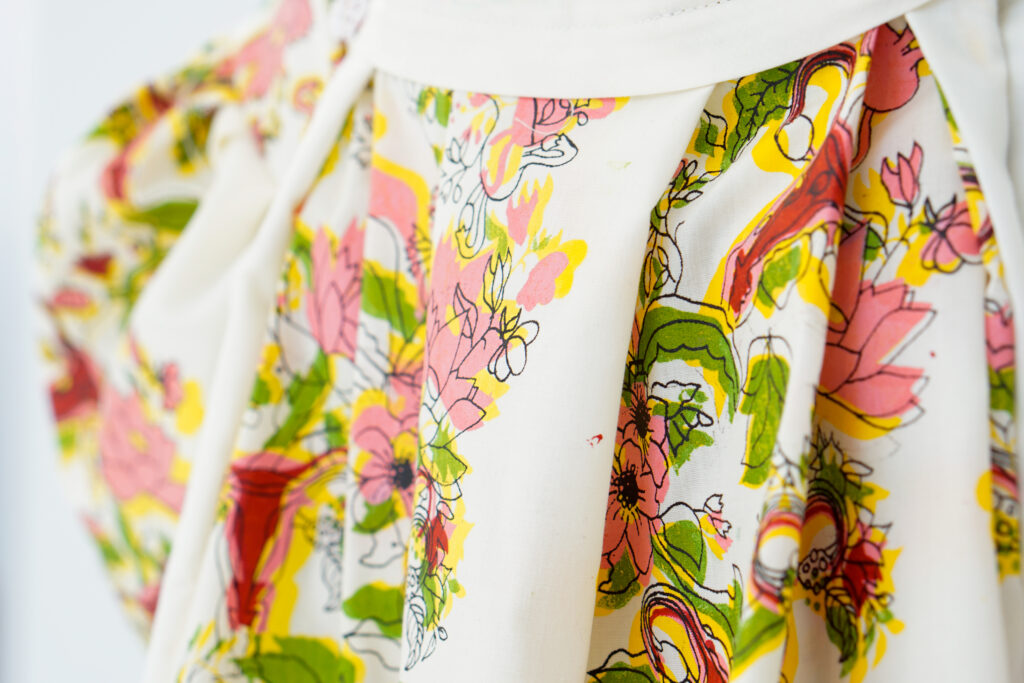
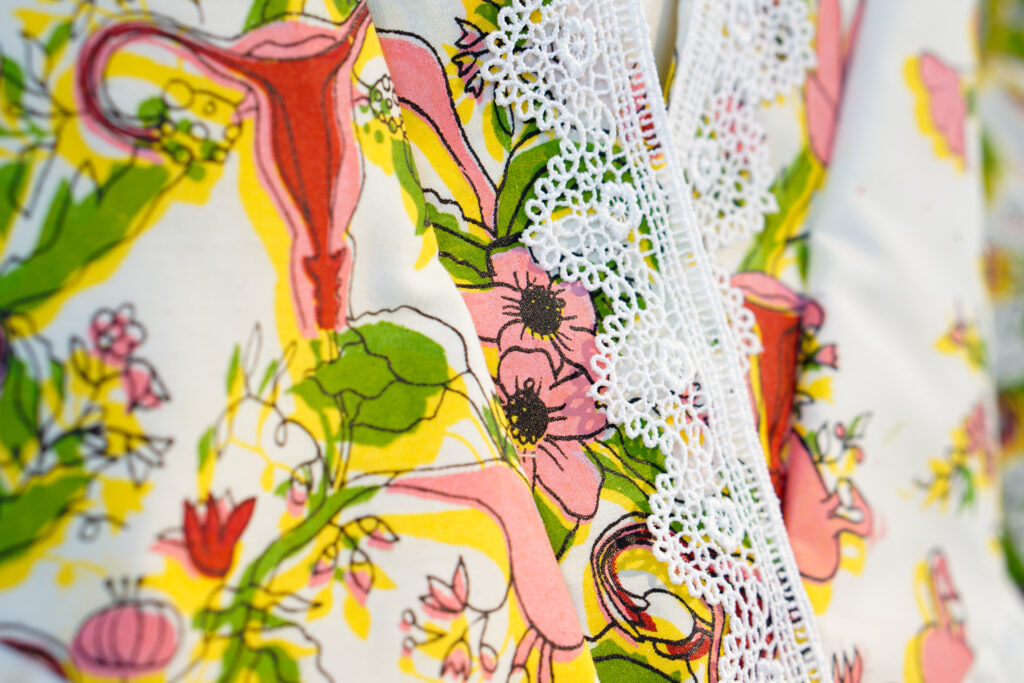
The knowledge of these issues and how much they affect half of the population, and the fact that there is not a whole lot being done regarding further research, has motivated me to spark conversations. I want to try to raise awareness of these issues, and to try to inspire the healthcare system to develop more knowledge about these diseases, along with many others that I have not named. I hope to bring knowledge of my struggles to others, with the hope that they realize that they are not alone in their experiences, and that they are allowed to feel anger towards the healthcare, as in many ways it has failed those of us who unfortunately experience these issues.
Uterine Chintz is the child of all of these thoughts and facts. It is a piece with the intent to display as a beautiful article of clothing, to then transform into something moderately horrific the closer you get to the dress. The images appear to be flowers intertwined with leaves from afar, yet are actually diseased uteruses disguised as a floral pattern. Taking a closer look, you can clearly see diagrams of the three diseases I outlined above; endometriosis, fibroids, and PCOS. I purposefully included lotus and myrtle flowers in the pattern, as these flowers are heavily associated with female fertility.
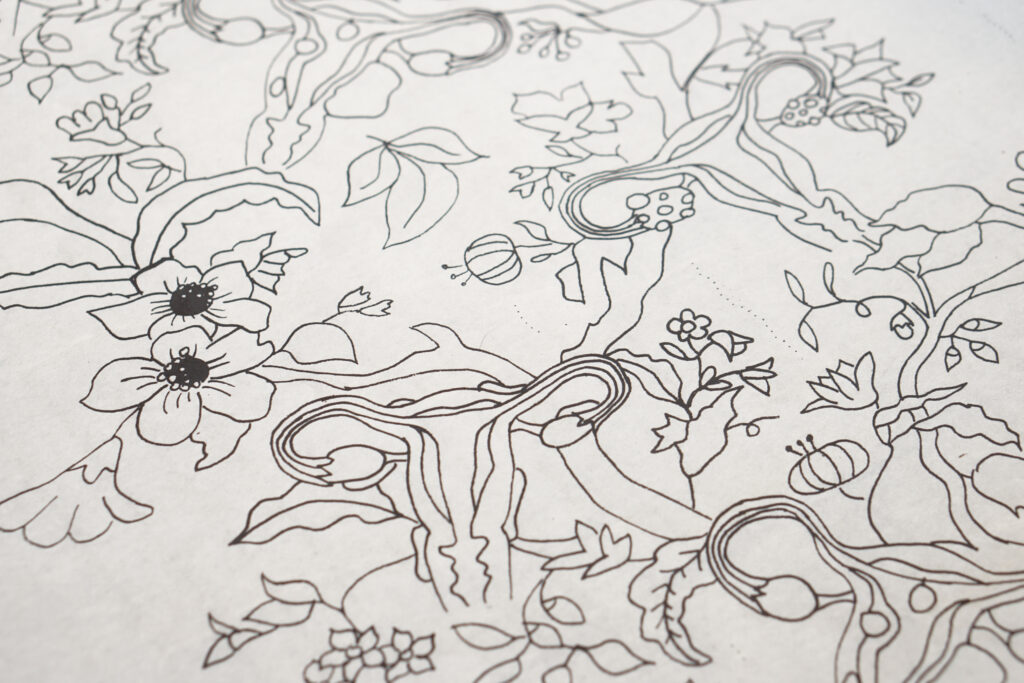
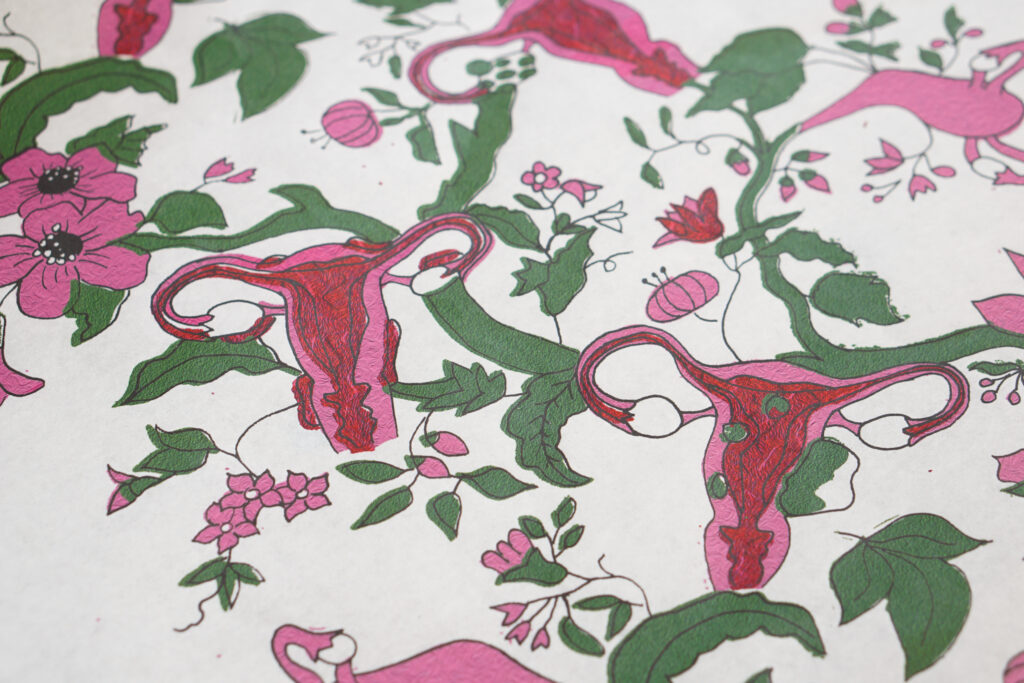
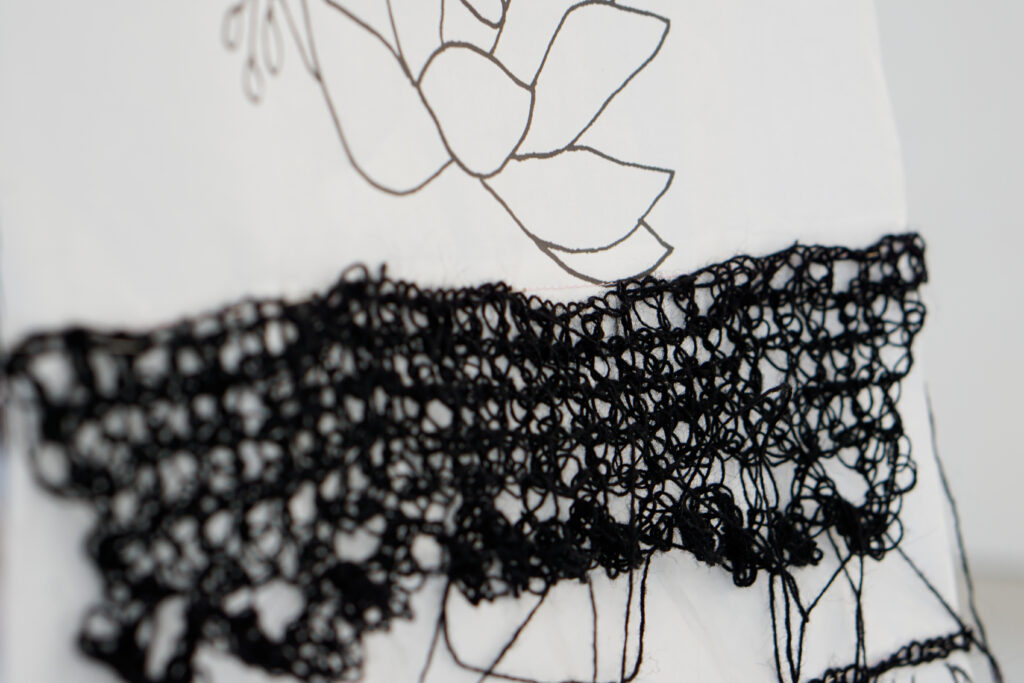
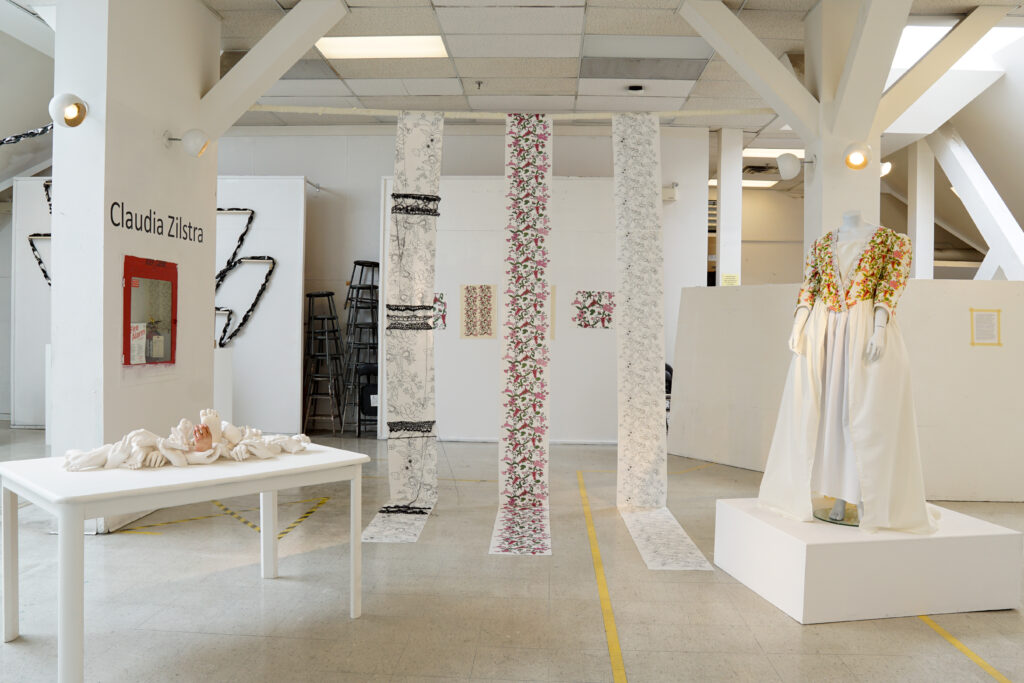
Chintz is a pattern that was fashionable during the early 1800’s, and was popularized primarily on women’s clothing. It consists of a repeated pattern of flowers and leaves, usually with some sort of branch or vine in the background. At the time, women’s clothing was worn during certain times of the day, and depending on what type of location or event she would be going or attending. In this case, I decided to make the most used article of clothing in most women’s closets at the time: a sack back day dress. This type of dress was also quite often covered in floral or checkered patterns, and would be typically made out of cotton or linen. I purposefully chose a 100% cotton fabric dyed in a light yellow to attempt to follow this historic guideline, and to be as accurate as possible to how day dresses would have looked at the time. This piece also includes a cotton underskirt, as well as a set of panniers, or “pocket hoops”, which is a type of shapewear worn under the underskirt to create the illusion of a wide hip, and to help create the bell shape of the skirt. All of these undergarments were made by myself, as they are not easy to come across in today’s fashion outlets.
In researching for this project, I found myself wondering how women and other people with uteruses have been able to withstand hundreds of years with minimal exploration into why all of these diseases occur, and how to properly treat them. One of the books I read to explore historic patterns from the 1800s was roughly around 100 years old. I wondered if anyone else had read this book over the past 100 years, and connected the dots between how little has changed in many aspects of our lives since those clothing patterns were fashionable. In completing this project, I found that I had come to accept that knowledge on female reproductive health will most likely not change drastically within my lifetime, as many lifetimes have already come and gone with minimal change to the healthcare system. I hope that I may be proven wrong in this statement, and that Uterine Chintz will become a piece of historic context for how reproductive health was regarded in 2019.
Some valuable sources:
A special thank you goes to Evan Ginsberg for capturing these beautiful photos of my work.